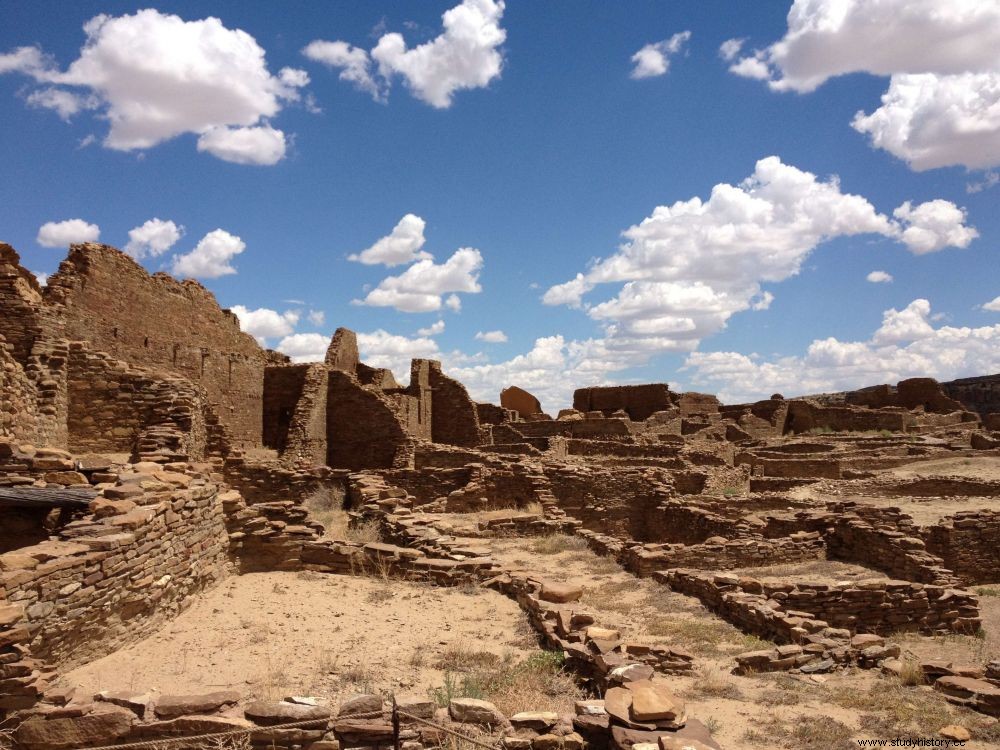Salt, incriminated for several years by archaeologists at Chaco Canyon, would have finally been a source of progress.

Chaco Canyon was the urban center of the Anasazi people.
DENIAL . The assumptions of archaeologists as to the decline of the Anasazis (the "Ancients" in Navajo), which would have been caused by a bad management of the water resources, in Chaco Canyon, are now refuted. Kenneth Barnett Tankersley, associate professor of anthropology and geology at the University of Cincinnati studied with his team the soils of Chaco Canyon, a set of 3600 archaeological sites belonging to the Anasazi culture, in the south-west of the United States, in New Mexico. They published on October 3, 2016 in the Journal of Archaeological Science their conclusions that the presence of salts in the soils of Chaco Canyon would rather have been favorable to the development of civilization rather than its loss.
Sulfate minerals, good for the soil
Until then, archaeologists thought that the Anasazi people had left this site following the drought of the soil caused by the poor management of water in this arid region. Indeed, it seemed impossible to cultivate these anhydrous and highly saline lands. But, until now, the excavations had not been pushed deep enough. After carrying out chemical analyzes of salinity, pH, X-rays and spectroscopy in the depths of the desert soil, Tankersley understood that these mineral salts had, on the contrary, made the land suitable for agriculture. In the thousand-year-old sediment levels, scientists thought they would find salts such as sodium chloride (NaCl), harmful to plants. But that was not the case. The salts found in the depths of Chaco Canyon have proven to be sulphate minerals that are not harmful to plants. The volcanic minerals and mixtures of calcium sulphate used by the natives would therefore have increased the fertility of the soil, making them favorable for cultivation, especially that of corn (their main production).
Indispensable storage
In addition, the site, surrounded by mountains, benefits from water supply after the snow melts in the spring. Thus, this "arid" area would have been a kind of fertile oasis irrigated by periodic rivers like Chaco Wash, an arroyo filled with water rich in minerals essential for agriculture. Recurring droughts still forced the Anasazi to use other means of irrigation. Scientists have found evidence that water was collected in ceramic jars, which were stacked and stored in thick-walled chambers in large homes, to keep it cool during times of drought. "One thing we can say with a high degree of certainty is that the Anasazi did not abandon Chaco Canyon because of salt pollution says Tankersley. Salt is therefore not the cause of the decline but rather the origin of the development of the Anasazi. This Amerindian civilization reached its peak between the 9th and 12th centuries AD. Chaco Canyon would then have been a great commercial crossroads and a place of pilgrimage.
